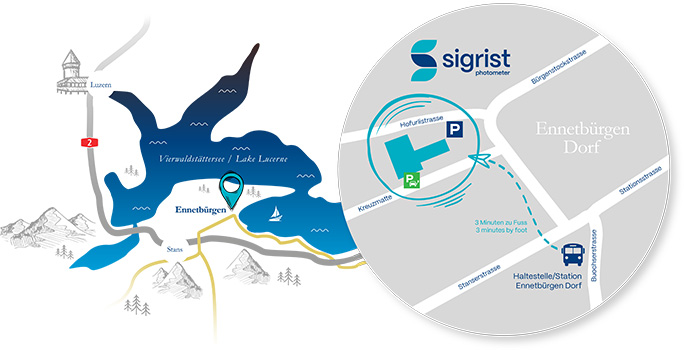The most widespread application of the SIGRIST fluorescence instrument is the detection of traces of hydrocarbons in water.
In the laboratory, the hydrocarbons are extracted with a solvent (e.g. pentane or hexane) and determination is carried out by infrared absorption measurement, gas chromatography or gravimetrically. This sample preparation (mixing, separation, drying) is challenging and excludes continuous measurement. A simple substitute solution now in use is the measurement of turbidity. Although it does detect tiny suspended oil droplets, it also reacts to other turbidity substances and fails to detect dissolved hydrocarbons.
For these reasons, the measurement of fluorescence has been adopted as direct detection method. It picks up the fluorescing substances regardless of their form (dissolved, emulsified, etc.) specifically and without requiring the use of reagents.
The most important industrial applications are:
-
oil extraction. The extracted crude oil is mixed with water, which has to be separated from the oil and then cleaned before being discharged to the environment. The tolerable residual oil content of the water is monitored by means of fluorescence measurement.
- oil tankers. Because the ballast water is badly contaminated with oil, it has to be treated either on board or ashore before being returned to the sea. Here too, continuous fluorescence instruments check the water's residual oil content of 15 ppm. The corresponding SIGRIST process photometer is explosion-proof and certified in accordance with the IMO regulations.
- heat exchangers. In production processes in the petrochemical industry, large numbers of heat exchangers are used for heating and cooling with steam or water. Leaks in these exchangers cause contamination of the water or condensate, which can have costly and dangerous consequences.
- wastewater. Industrial wastewater effluents must not be polluted with hydrocarbons. Fluorescence instruments monitor the officially prescribed limits continuously.
- drinking water. Spring water and surface water used for drinking water supplies can be contaminated with hydrocarbons as a result of accidents or leaks in fuel oil tanks. Continuous oil trace detection ensures clean drinking water.
